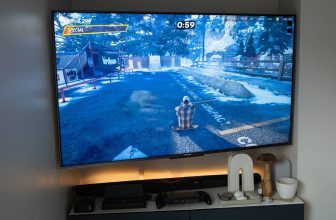Summary
- USB-C is inevitable — smaller, reversible, faster, and handles power plus display signals.
- USB-A remains essential: mice, dongles, and drives still use it; removing ports forces adapters.
- Don’t force upgrades: laptops need enough USB-A/C ports; hubs and adapters negate size gains.
USB ports changed the game when they first came out because they provided a standard connection interface for connecting devices. The move to USB was revolutionary at the time because until then, PCs and laptops were crammed with PS/2, serial, and parallel ports to connect keyboards, mice, and printers.Plug-and-play wasn’t a thing yet, and each device required unique driver software to function; the PC would need to restart after each installation.
I get that USB-C is inevitable, but tech brands should realize that the ubiquitous USB-A isn’t going anywhere soon.
After nearly 30 years of USB-A connectivity, the market is now transitioning to the convenient USB-C standard, which makes sense given that it supports higher speeds, display data, and power delivery. The symmetrical connection is also smaller and more user-friendly, as it’s reversible and works with smartphones and tablets. I get that USB-C is inevitable, but tech brands should realize that the ubiquitous USB-A isn’t going anywhere soon and stop removing the ports we need to run our devices.
The rundown on USB-A ports
Revolutionary at the time
USB 1.0 was released in 1996 with data transfer rates ranging from 1.5 to 12Mbps. The technology didn’t catch on until Apple adopted version 1.1 on its 1998 iMac G3, which signaled a shift in the market as brands ditched bulky legacy ports and moved toward USB. This standard was superseded by the widely adopted USB 2.0 in 2000, which introduced faster speeds of up to 480Mbps, plug-and-play compatibility, and power transfer capabilities ranging from 5 V to 500 mA. USB 2.0 was a game-changer because users could now connect their phones to their PCs, and the first memory sticks started appearing around this time.
USB 1.0 was released in 1996 with data transfer rates ranging from 1.5 to 12 Mbps.
By 2008, USB had become the standard connectivity standard for most devices, and the need for increased speed led to the release of version 3.0, also known as 3.2 Gen 1, which could transfer data at between 5 and 10Gbps. The new USB 3.1, also known as USB 3.2 Gen 2, was released in 2013 with speeds of up to 10Gbps. The final version, USB 3.2, was introduced in 2017 with speeds of up to 20Gbps.
Why we need USB-C
Progress is inevitable
No tech standard can last forever, and USB-A has its limitations. The most common complaint about USB-A is its non-reversible rectangular design, which can be a nuisance when the port isn’t visible and sometimes requires trial and error to plug in correctly. It’s also quite bulky and doesn’t work as well on devices like phones and cameras, which require modified compact versions like micro and mini-USB due to their compact size.
Another significant advantage of USB-C is its ability to carry display signals
USB-C solves these issues with its smaller, symmetrical design. It’s compatible with older USB standards, although it achieves the best results with the latest USB 4.0 standard, released in 2019, which offers data transfer speeds of up to 40 Gbps and supports up to 240 W of power. Another significant advantage of USB-C is its ability to carry display signals, allowing it to replace HDMI cables for connecting a laptop to a monitor. It makes sense to use a single cable for charging our phones and connecting other devices, and it’s no surprise that the EU has mandated USB-C as the standard connection to reduce waste.
Brands phasing out USB-A
Nobody likes forced upgrades
Technology is always evolving, but it’s unfair to force users to upgrade, especially when older devices are still supported. Apple phased out USB-A years ago, and other brands, such as Dell, have followed suit, offering USB-C only on select XPS models. Although expensive MacBooks and XPS laptops are designed for demanding professional users, they often lack a sufficient number of USB-C ports, making them less useful to everyday users. The three ports on the MacBook and two on the XPS 13 9350 are barely enough to connect a mouse and external drive, let alone charge a phone or connect a camera. The reasoning behind this is a smaller and lighter footprint, but it isn’t helpful to inconvenienced users who’ll need to waste money on alternative solutions to connect their hardware.
Apple phased out USB-A years ago, and other brands, such as Dell, have followed suit, offering USB-C only on select XPS models.
Samsung’s Galaxy Pro Book is another example of a premium high-spec laptop available with a miserly port selection, including a single USB-A port and a pair of USB-C ports, which are barely adequate for professional users. The irony is that many lower-end models still include a pair of USB-A and USB-C ports, which seems reasonable, considering the amount of space available, and should be the minimum on all laptops.
Why we still need USB-A
It’s still used everywhere
Users were enthusiastic about ditching older hardware, which had different cables and driver issues, and quickly moved to USB because of its convenience. The move from USB-A to USB-C isn’t as urgent since our external drives, memory sticks, and other equipment function without issues, and there aren’t many benefits to upgrading. It seems pointless to spend money upgrading hardware, like mice and keyboards, to a new port when the benefits are questionable, and you probably won’t notice a performance difference.
It also seems premature for brands to phase out USB-A when peripheral brands are still making compatible products in 2025.
It’s premature for brands to phase out USB-A when peripheral brands are still making compatible products in 2025. For example, Logitech’s current wireless pro gaming mice connect using a USB-A Lightspeed dongle, and most Seagate external drives still use USB-A as their connection method. The same can be said for other memory sticks, keyboards, wireless headsets, and other new devices that are still manufactured with a USB-A connection.
I have a gaming laptop with two USB-A and USB-C ports, and it’s a constant struggle to connect all my devices simultaneously without needing a hub. I use the two USB-A ports for my mouse and wireless headset dongles, while a phone charging cable and portable monitor take up the USB-Cs. This setup stresses me out because there’s no extra space to connect anything else without losing functionality.
Laptops getting smaller and lighter is no excuse for brands to reduce practical features, especially when they’re charging higher prices than ever. The extra weight and size savings become pointless if you still need to carry a separate USB hub or adapter cables in your laptop bag. Reducing the number of ports seems like another cost-cutting measure designed to maximize profits at the expense of the user experience.
There’s no doubt that USB-A will eventually disappear like all legacy tech. However, that day is still far off, and most hardware currently in circulation uses the older connector instead of USB-C. We deserve to have the necessary ports on our laptops while USB-A devices are still in production and widely available for purchase.
Trending Products

Wireless Keyboard and Mouse Combo, ...

Lenovo New 15.6″ Laptop, Inte...

Dell Inspiron 15 3520 15.6″ F...

Acer Nitro KG241Y Sbiip 23.8” Ful...

Wireless Keyboard and Mouse Combo, ...

Zalman i3 NEO ATX Mid Tower Gaming ...

GAMDIAS ATX Mid Tower Gaming Comput...

Sceptre Curved 24-inch Gaming Monit...

Acer SH242Y Ebmihx 23.8″ FHD ...










